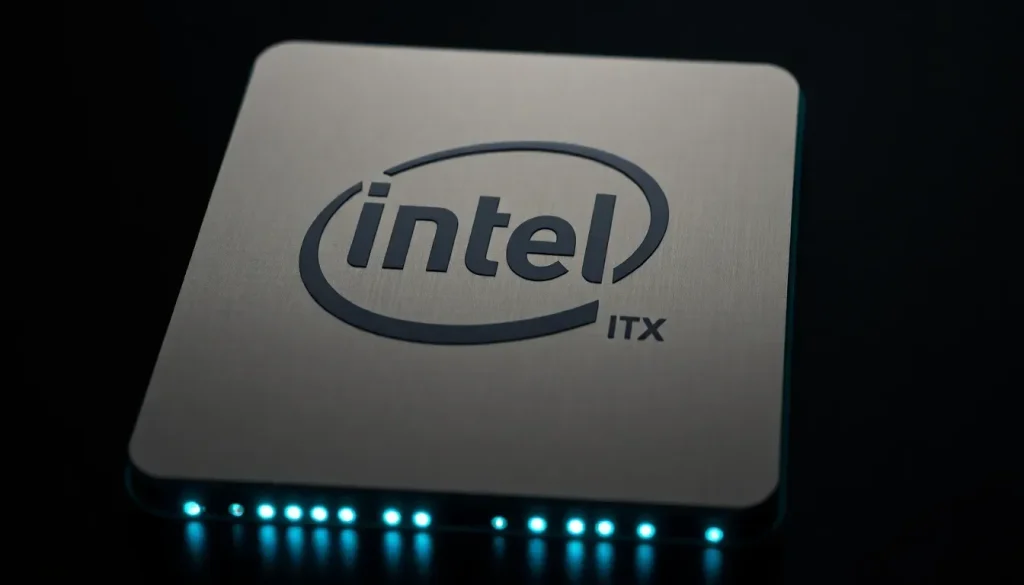Intel Nova Lake CPUs Introduce New Architecture and Software Upgrades

The world of computing is undergoing rapid transformations, with new architectures and technological advancements paving the way for more powerful and efficient processors. Among the leading players in this space is Intel, which has made significant announcements recently regarding its upcoming CPU architectures. In this article, we will deeply explore Intel's Panther Lake and Nova Lake CPUs, their upcoming launches, and how they fit into the broader landscape of client and server products.
Intel's Chief Executive Officer, Lip-Bu Tan, provided insights during the Q3 2025 earnings call, revealing the company's strategic roadmap for the coming years. This included key announcements regarding their Panther Lake CPUs and the anticipated Nova Lake architecture. Below, we will delve into these topics and their implications for both consumer and enterprise markets.
- Intel confirms that 18A will be utilized across multiple generations of client and server products
- The timeline for Panther Lake and Nova Lake releases
- The competitive landscape for high-end desktops
- Upcoming products and innovations in the server space
- Technological advancements and the future of Intel's foundry services
- The significance of AI in Intel's future developments
- Looking ahead: Panther Lake and beyond
Intel confirms that 18A will be utilized across multiple generations of client and server products
During the earnings call, Tan confirmed that Intel's 18A process technology would be a foundational element for at least the next three generations of both client and server products. This announcement underscores Intel's commitment to innovation and maintaining competitiveness in a rapidly evolving market.
The Panther Lake CPU is expected to make its debut by the end of this year, with additional SKUs following in the first half of 2026. Intel plans to unveil the Panther Lake processors at CES 2026, where the company will showcase the Core Ultra Series 3 family. The first SKU is anticipated to be a premium offering, with subsequent models shifting towards more cost-effective options as production ramps up under the 18A technology.
Alongside Panther Lake, Intel is also preparing for the Nova Lake platform, projected for release in the latter half of 2026. Nova Lake is expected to deliver substantial upgrades, boasting up to 52 cores and new integrated graphics based on the Xe3P architecture. This new architecture aims to provide enhanced performance and efficiency, enabling more demanding applications and workloads.
The timeline for Panther Lake and Nova Lake releases
Intel's roadmap is clearly defined, with specific timelines set for the introduction of its next-generation CPUs. The company plans to launch the Panther Lake CPUs at CES 2026, followed by the Nova Lake platform. Below is a brief overview of the anticipated release timeline:
- Panther Lake Launch: End of 2025 (CES 2026)
- Nova Lake Launch: Second half of 2026
- Core Ultra Series 3 Availability: January 2026
This structured schedule demonstrates Intel's strategic approach as it seeks to solidify its position in both consumer and enterprise markets. The emphasis on bringing cost-optimized products to a wide range of customers highlights Intel's adaptability in a competitive landscape.
The competitive landscape for high-end desktops
Intel's high-end desktop segment continues to be a fiercely contested arena. With competitors like AMD pushing the boundaries of performance, Intel is focused on its Arrow Lake CPU family, which is expected to see a refresh soon. This will be followed by the introduction of the Nova Lake platform.
Key features of the upcoming Nova Lake architecture include:
- New architectural design aimed at improving performance
- Enhanced software compatibility for better integration with existing systems
- Increased core counts to handle demanding applications
As Intel prepares to roll out these new architectures, it is essential for the company to maintain a competitive edge by delivering innovative solutions that meet the evolving needs of users.
Upcoming products and innovations in the server space
On the server side, Intel is witnessing robust demand for its Granite Rapids (Xeon 6 P-Core) CPUs, with significant traction across major hyperscalers. The company anticipates that the Client Computing Group (CCG) segment may experience a downturn in the upcoming quarter; however, strong demand for server chips is expected to bolster the Data Center and AI (DCAI) group.
Intel is also set to expand the Xeon family with new additions, such as the Xeon 6+ "Clearwater Forest" chips based on the 18A technology, expected around mid-2026. These advancements will further enhance Intel's offerings in the server market.
Technological advancements and the future of Intel's foundry services
Intel's foundry services are making commendable progress with its 18A process technology, which has entered high-volume manufacturing at Fab 52 in Arizona. This facility is expected to play a critical role in meeting the growing demands for advanced semiconductor manufacturing.
The 18A technology is anticipated to be a game-changer, offering:
- Performance-optimized variants (18A-P) with up to 10% higher gains
- Long-term scalability and flexibility to accommodate diverse customer needs
- Focus on advanced packaging technologies like EMIB and EMIB-T
Intel's foundry services strategy aims to build long-term partnerships with customers, ensuring that their unique requirements for power, performance, yield, cost, and schedule are met. This customer-centric approach is crucial in establishing Intel as a reliable, long-term partner in the semiconductor industry.
The significance of AI in Intel's future developments
AI is becoming increasingly vital in shaping the future of computing. Intel is keen on integrating AI capabilities into its product lines, including Xeon processors and GPUs. This focus on AI will drive the development of inference-optimized GPUs that feature enhanced memory and bandwidth.
Key initiatives include:
- Development of the Crescent Island, Intel's first Xe3P accelerator designed for AI inference
- Multi-generational roadmap for AI-focused GPUs
- Annual cadence for launching new inference-optimized GPUs
These advancements are expected to meet the growing demands of enterprise customers seeking powerful solutions for AI-driven applications.
Looking ahead: Panther Lake and beyond
As the computing landscape continues to evolve, Intel's upcoming releases, particularly the Panther Lake and Nova Lake CPUs, signal a transformative phase for the company. With a strong emphasis on innovation and customer-oriented solutions, Intel aims to solidify its position as a leader in the industry.
As these new products launch, industry enthusiasts and professionals alike are eager to see how Intel's 18A technology performs in real-world scenarios and the impact it will have on the future of computing. With strong demand and strategic development, the next few years promise to be exciting for Intel and its customers.




Leave a Reply